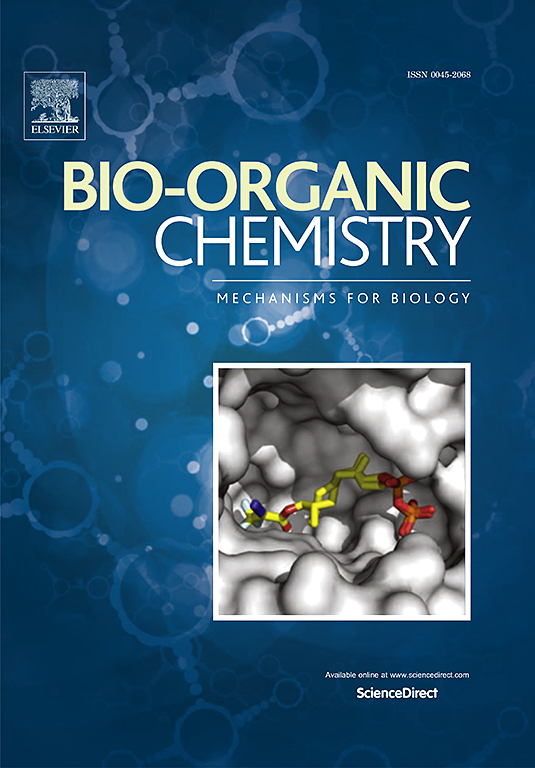Talaromyketides A-I: Nine polyketides with anti-inflammatory activity from a soil fungus Talaromyces sp. KYS-41
IF 4.5
2区 医学
Q1 BIOCHEMISTRY & MOLECULAR BIOLOGY
引用次数: 0
Abstract
A chemical investigation into fermentation product of Talaromyces sp. KYS-41, a fungus isolated from Kunyu Mountain soil, resulted in the discovery and identification of 27 polyketides. Notably, talaromyketides A-I (1–9) are reported for the first time, with talaromyketides A-C (1–3) being three pair of enantiomers. Talaromyketides A-D (1–4) display novel frameworks and are regarded as products resulting from oxidative ring-opening and/or subsequent rearrangement of the bibenzyl derivatives. Talaromyketide A (1) exhibits a scaffold comprising an isochroman-1,4-dione, whereas talaromyketide B (2) showcases the structural backbone of a naphthalen-1(4H)-one. Talaromyketides C (3) and D (4) are the outcomes of oxidative ring-opening of one of the phenyl rings in bibenzyl derivatives. Biological evaluations demonstrated that compounds 2b, 9, and 18–21 show significant anti-inflammatory activity with IC50 values within 10 μM. By inhibiting the activation of NF-κB/MAPK signaling pathways, (−)-1S-talaromyketide B (2b) is involved in suppression of inflammatory response and shows significant pharmacological effects in vivo on zebrafish model.

求助全文
约1分钟内获得全文
求助全文
来源期刊

Bioorganic Chemistry
生物-生化与分子生物学
CiteScore
9.70
自引率
3.90%
发文量
679
审稿时长
31 days
期刊介绍:
Bioorganic Chemistry publishes research that addresses biological questions at the molecular level, using organic chemistry and principles of physical organic chemistry. The scope of the journal covers a range of topics at the organic chemistry-biology interface, including: enzyme catalysis, biotransformation and enzyme inhibition; nucleic acids chemistry; medicinal chemistry; natural product chemistry, natural product synthesis and natural product biosynthesis; antimicrobial agents; lipid and peptide chemistry; biophysical chemistry; biological probes; bio-orthogonal chemistry and biomimetic chemistry.
For manuscripts dealing with synthetic bioactive compounds, the Journal requires that the molecular target of the compounds described must be known, and must be demonstrated experimentally in the manuscript. For studies involving natural products, if the molecular target is unknown, some data beyond simple cell-based toxicity studies to provide insight into the mechanism of action is required. Studies supported by molecular docking are welcome, but must be supported by experimental data. The Journal does not consider manuscripts that are purely theoretical or computational in nature.
The Journal publishes regular articles, short communications and reviews. Reviews are normally invited by Editors or Editorial Board members. Authors of unsolicited reviews should first contact an Editor or Editorial Board member to determine whether the proposed article is within the scope of the Journal.
 求助内容:
求助内容: 应助结果提醒方式:
应助结果提醒方式:


